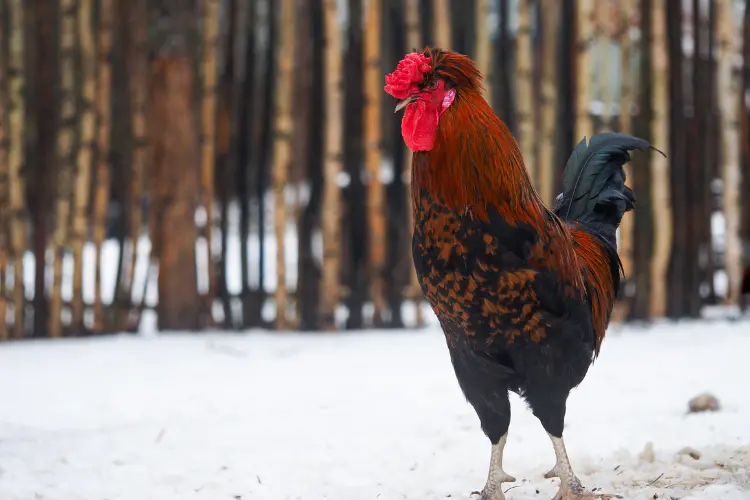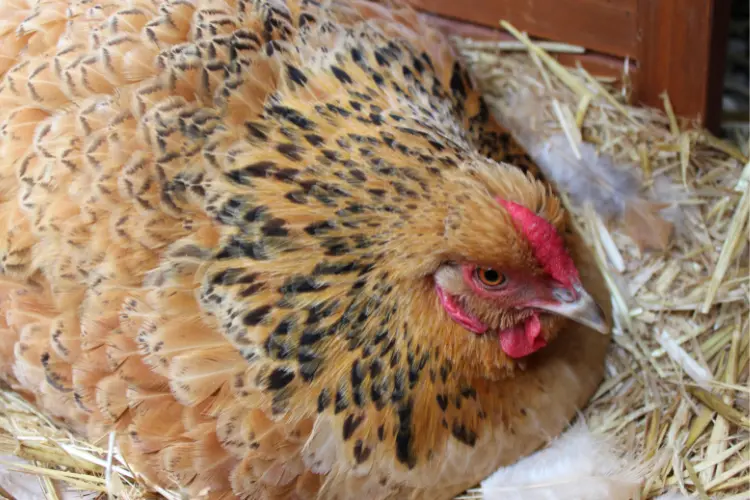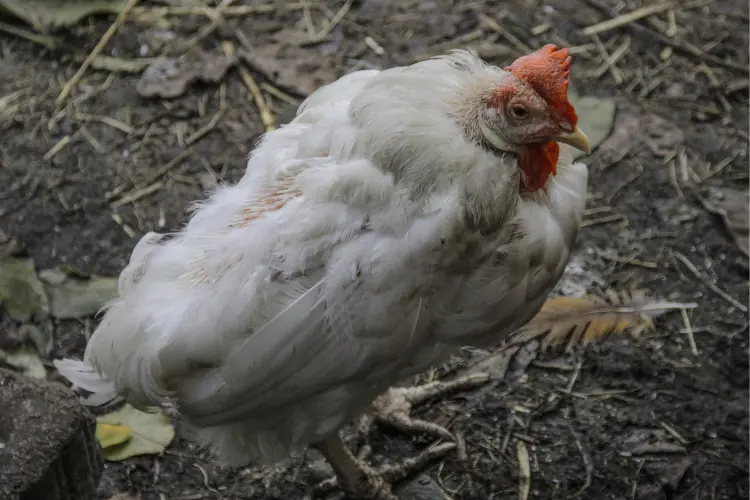Beginner’s Complete Guide to Selecting the Best Chickens
Have you ever wandered through a poultry farm or skimmed online chicken forums and found yourself overwhelmed by the myriad of chicken breeds? Maybe you’ve imagined starting your own flock and raising chickens but don’t know which chickens are best for eggs, meat, or companionship.
It’s not just about picking the prettiest bird; it’s about understanding their needs, temperaments, and what they can offer you. Navigating the chicken world can be daunting for beginners. That’s why I’ve crafted this perfect guide to ensure you’re well-equipped to make informed choices.
Factors to Consider When Selecting the Best Chickens
1. Weather Tolerance
One of the crucial factors to take note of when selecting chickens is their weather tolerance. Chickens come in various breeds, each with its own level of tolerance to different climates. Some breeds thrive in cold weather, while others are better suited for hot and humid conditions. It’s essential to choose chickens that can withstand the prevailing weather conditions in your region to ensure their health and productivity.
For cold climates, breeds like the Plymouth Rock and Orpingtons are cold hardiness. Conversely, in hot climates, breeds such as the Leghorn and Sussex may be better choices due to their heat tolerance.
Read also: How Do You Care for Chickens in the Cold Winter

2. Confinement Tolerance
The amount of space you can provide for your chickens plays a significant role in breed selection. Some breeds are more adaptable to confinement, making them ideal for smaller urban or backyard chicken coop. On the other hand, free-range breeds require more space and may not thrive in limited environments.
If space is limited, consider breeds like Silkies or Bantams well-suited for confinement. However, if you have ample room to allow your chickens to roam, you can opt for active and larger breeds such as Rhode Island Reds or Australorps.
Read also: How to Build a Safe Chicken Run That’s 100% Safe
3. Temperament
Chickens have distinct personalities, and their temperament can vary widely from breed to breed. Some breeds are known for their docility and ease of handling, making them great choices for families with children. Others may be more skittish or aggressive, which could pose challenges when it comes to daily care and egg collection.
For friendly and docile chicken breeds, consider the Sussex or Wyandotte. If you’re looking for more independent birds, Mediterranean breeds like Leghorns might be a better fit.
4. Broodiness
Broodiness refers to a hen’s natural inclination to sit on and incubate eggs. While broody hens can be excellent for hatching chicks naturally, they may not lay as many eggs during this period. If you’re primarily interested in egg production, it’s crucial to choose a breed that is less prone to broodiness.
Breeds like Rhode Island Reds and White Leghorns have low broodiness, making them top choices for consistent egg layers.
Read also: Safe Broody Breaker Methods: How to Break a Broody Hen

5. Color and Number of Eggs
Egg color and production quantity can be essential factors in chicken selection. Different breeds lay eggs of varying colors, including white, blue, green and even dark chocolate brown eggs. Additionally, some breeds are prolific layers, while others are more moderate in their egg production.
If you have a preference for egg color, you can choose a breed accordingly. For instance, Ameraucanas lay blue eggs, while Plymouth Rocks typically lay brown eggs. Research the egg production rates of different breeds to match your egg needs with the breed’s capabilities.
6. Noise Level
Chickens are not quiet, and some breeds are noisier than others. If you have close neighbors or live in an urban area with noise restrictions, it’s essential to consider a quieter breed to maintain neighborly relations.
Generally, smaller and less active breeds are the best chickens for you like the Silkies because they are quieter, while larger, more active breeds, like Rhode Island Reds, can be quite vocal.
Read also: Understanding Chicken Communication: Sounds Explained
7. Appearance
While aesthetics may not be the primary consideration, the appearance of your backyard chicken breeds can add charm to your flock. Different breeds come in various feather patterns, colors, and sizes, allowing you to choose chickens that appeal to your visual preferences.
If you’re interested in ornamental chickens, the best chicken breeds like Polish or Serama chickens are known for their unique and attractive appearances.
8. Rarity
Lastly, consider whether you want to raise rare or heritage breeds. These breeds may require more specialized care but can be rewarding for those interested in conservation and preserving genetic diversity in poultry. Breeds like the Delaware or Chantecler chickens fall into the category of rare and heritage breeds.

What Should I Look Out For When Buying a Chicken?
Cloudy Eyes
A chicken’s eyes can tell you a lot about its health. Healthy chickens should have clear, bright eyes that are alert and responsive. When you approach a potential bird for adoption or purchase, observe its eyes. Dull or cloudy eyes could be a sign of illness or distress. The eyes should also be free from any discharge or crustiness.
Nasal or Eye Discharge
Any signs of nasal or eye discharge, such as sneezing, runny eyes, or crustiness, should be a cause for concern. These symptoms can indicate respiratory or ocular infections.
Sleepy and Lethargic
Chickens are naturally curious creatures. When evaluating a chicken, pay attention to its behavior. It should be curious about its environment and show interest in you. A chicken that appears disinterested, lethargic, or excessively sleepy may be unwell. A healthy chicken should be responsive and engaged with its surroundings.
Blocked Vent
A chicken’s vent is its posterior opening, used for waste elimination and reproduction. If you notice any blockage or signs of discomfort around this area, it could indicate a health issue that needs attention.
Dull Feathers
A chicken’s plumage is a reflection of its overall health. The feathers or fluff should look clean and well-groomed, with vibrant colors. Disheveled or matted feathers can indicate a problem, such as poor nutrition or illness. Additionally, be on the lookout for bald spots or missing feathers, as these can be signs of feather plucking or health issues.
Hunched Posture
A chicken that hunches into a ball or maintains an abnormal posture may have underlying health issues. Healthy chickens typically stand upright and maintain a balanced posture.

Isolation
Chickens are social creatures, and they generally thrive when in the company of other chickens or humans. If you see a chicken sitting by itself and avoiding interaction, it might be experiencing stress or illness.
Reluctance to Move
Chickens should be active and mobile. A chicken that is reluctant to move or struggles to fly may have mobility issues or a health problem.
Chicken Breed List to Help Choose Your Chicken
Egg-Laying Chicken Breed:
- Leghorn: Leghorns are prolific white egg layers, active and somewhat skittish in nature.
- Australorp: Australorps hold a world record for egg production, laying large brown eggs, and they are docile.
- Ameraucana: Ameraucanas lay blue-green eggs and have a friendly disposition. They have distinctive muffs and a beard.
- Araucana: Araucanas also lay blue-green eggs and have tufted ears, though they can be flighty.
- Polish: Polish chickens have striking crests of feathers on their heads and lay white eggs. They have a quirky appearance.
- Sex-links: Sex-links are excellent for egg production and are easy to sex at birth based on their color.
- Ancona: Anconas lay white eggs and have attractive mottled plumage.
- Andalusian: Andalusians lay blue eggs and have an elegant, sleek appearance with blue slate legs.
- Asturian Painted Hen: These Spanish chickens lay small white eggs with unique blue and black coloring.
- Barnevelder: Barnevelders lay dark brown fresh eggs and are calm and friendly.
- Campine: Campines are active birds with attractive silver or gold plumage and lay white eggs.
- Catalana: Catalanas have crests and lay white eggs.
- Easter Egger: Easter Eggers are popular for their colorful eggshells, ranging from blue to green.
- Egyptian Fayoumi: Fayoumis are small, active birds known for their hardiness and white eggs.
- Marans: Marans are famous for their dark brown eggs and friendly temperament.
- Minorca: Minorcas lay large white chicken eggs and elegance.
- Orloff: Orloffs have a unique appearance and lay brown eggs.
- Penedesenca: Penedesencas are Spanish chickens that lay dark brown eggs and are calm.
- White-Faced Black Spanish: These birds have white faces and lay white eggs.
- Welsummer: Welsummers are friendly and lay dark brown speckled eggs.
- Bovans Browns: Bovans Browns are hybrid layers and have consistent egg production.
- Orpingtons: Orpingtons come in various colors, are dual-purpose, and lay brown eggs.
- Rhode Island Reds: Rhode Island Reds are dual-purpose birds known for brown egg production.
Meat-Type Chicken Breed:
- Cornish: Cornish chickens are widely used in commercial broiler operations due to their meaty build.
- Freedom Ranger: These birds are popular for pastured poultry production and provide flavorful meat.
- New Hampshire: New Hampshires are a popular choice for backyard meat enthusiasts.
- Jersey Giant: This is one of the largest chicken breeds, making them suitable for meat production.
- Java: Javas are a dual-purpose breed but are also appreciated for their meat quality.
- Naked Neck: Naked Neck chickens are known for their meat, and their featherless necks are a distinctive feature.
- Bresse: Bresse chickens are highly regarded in France for their meat, often considered the best-tasting chicken in the world.
- Hubbard: Hubbard chickens are commonly used in the commercial broiler industry due to their rapid growth and meat yield.
Dual-Purpose Chicken Breed:
- Rhode Island Red: Rhode Island Reds lay brown eggs and are versatile for both meat and egg production.
- Orpington: Orpingtons come in various colors and are excellent dual-purpose birds with a gentle temperament.
- Dominique: This is one of the oldest American breeds and are suitable for both egg and meat production.
- Plymouth Rock: Plymouth Rocks are friendly and lay brown eggs while also being suitable for meat.
- Wyandotte: Wyandottes come in various colors, are docile, and excel in both egg and meat production.
- Brahma: Brahmas are large, gentle birds known for their meat and brooding tendencies.
- Delaware: Delawares are dual-purpose birds for their meat and white eggs.
- Barnevelder: Barnevelders are friendly, dual-purpose birds that lay dark brown eggs.
- Barred Plymouth Rock: Barred Plymouth Rocks are excellent layers of brown eggs and are suitable for meat.
- Buckeye: Buckeyes are hardy birds that excel in both meat and egg production.
- California Gray: California Grays are versatile birds.
- Chantecler: Chanteclers are dual-purpose birds and have cold hardiness.
- Cubalaya: Cubalayas are small and attractive birds suitable for both meat and eggs.
- Derbyshire Redcap: Derbyshire Redcaps are dual-purpose birds with large combs and white eggs.
- Faverolles: Faverolles are friendly, dual-purpose birds with a unique appearance.
- Holland: Hollands lay brown eggs and have a friendly temperament.
- Iowa Blue: Iowa Blues are rare dual-purpose birds
- Java: Javas are dual-purpose birds with a calm disposition and brown eggs.
- Jersey Giant: Jersey Giants are large in size and have good meat quality.
- Marans: Marans are famous for their dark brown eggs and are suitable for both meat and eggs.
- New Hampshire: New Hampshires has good meat and brown eggs.
- Red Shaver: Red Shavers are hybrid layers suitable for both meat and egg production.
- Rhode Island Red: Rhode Island Reds are dual-purpose birds known for brown egg production.
- Rhode Island White: Rhode Island Whites are similar to Reds and are dual-purpose birds.
- Sussex: Sussex chickens come in various colors and are known for their meat and eggs.
- Winnebago: Winnebagos are dual-purpose birds with a unique history.
- Speckled Sussex: Speckled Sussex are dual-purpose birds known for their attractive plumage.
Ornamental Chicken Breeds:
- Modern Game Fowl: Modern Game Fowl are prized for their ornamental appearance and are often used in poultry shows.
- Silkie: Silkies have fluffy feathers, gentle temperament, and a unique appearance, including black skin.
- Frizzle: Frizzled feathers give these chickens a distinctive appearance, and they come in various breeds.
- Sebright: Sebrights are small and ornamental with striking laced plumage.
- Cochin: Cochins are fluffy, large birds with a calm temperament and come in various colors.
- Serama: Seramas are the smallest chicken breed globally and have miniature size and friendly nature.
- Polish: Polish chickens have distinctive crests.
- Sultan: Sultans have a unique appearance, with feathered legs and a regal demeanor.
- Sumatra: Sumatras are striking birds with glossy black plumage and a spirited disposition.
- Vorwerk: Vorwerks are rare and attractive birds with colorful plumage.
Get the Best Chickens Now
Selecting the right chickens for your backyard flock is a crucial first step in your poultry-keeping journey. Whether you’re looking for prolific egg layers, robust meat producers, versatile dual-purpose birds, or ornamental varieties, there’s a chicken breed to suit your needs and preferences.
Remember that each breed comes with its unique traits and characteristics, so take your time to research and choose wisely. With careful planning and proper care, your backyard chickens will not only provide valuable resources but also become beloved additions to your homestead or backyard.

